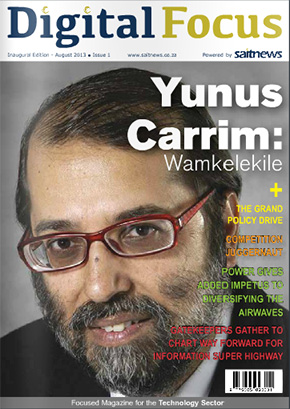The big BI game changers in 2013
By Sean Paine, Chief Operating Officer, EnterpriseWorx, sees significant changes afoot in BI this year.

We are likely to see significant and rapid BI change taking place as game-changing new technologies come to market, says Sean Paine.
Business Intelligence (BI) has been steadily evolving to adapt to numerous technology landscape changes in recent years – for example, mobility, big data and the rise of social media.
But this year, we are likely to see significant and rapid BI change taking place as game-changing new technologies come to market and enterprise attitudes mature.
Push analytics is possibly the biggest innovation coming to the fore in BI today. Monitoring, alerts and analytics are nothing new in BI; but with the advent of technologies like Google Glass, we are beginning to see the potential for BI and analytics tools that deliver the relevant information to the user – before he asks for it.
Consumer applications are available today that deliver relevant information from a range of sources – take, for example, applications running on new mobile platforms, which can integrate a user’s meeting schedule, maps and traffic information to alert the user to how much time they will need to travel to their next meeting. Consumerisation trends mean we are likely entering an era when enterprise BI becomes more intuitive, pushing relevant information to the user shaped around who they are and what they wish to accomplish.
Personal BI is coming to the fore as part of this change. Consumer technologies such as smart fitness monitors have started taking BI into some consumers’ lives, but with the arrival of BI-based applications in mainstream products like next generation smart phones, we can expect massive uptake of personal BI. Now, with tools such as the smart phone health applications, consumers can track things like exercise, weight and rest. Applications like this could be a tipping point for personal BI, as millions of users share and compare their behaviour, thus taking vast amounts of new data about consumers into the public space.
Sentiment analysis is another trend likely to come to the fore this year. We have seen much talk about social media sentiment analysis in recent years, but as social media takes centre stage and more enterprises see the value of social media engagement, we expect greater uptake of tools such as Qlikview to enhance the value of this engagement. In the business to consumer space, enterprises are starting to understand that engagement is not enough – they need to understand what those thousands of tweets really mean.
Self-service BI is maturing as enterprise use of BI tools extends to every department, with the associated need for only the relevant information to be delivered to users. Because enterprise users are growing accustomed to having similar tools in their personal lives, they demand access to BI tools in the workspace as well.
In line with self-service BI, we are seeing the rise of the infographic. Data visualisation is coming to the fore because people tend to understand data better when it is presented as a picture.
The down side of this may be that untrained employees could make costly mistakes because it is possible to be misled by data and numbers. For example, correlation does not always equal causation – just because figures appear to be related does not mean that they are. This could see the emergence of the data analytics worker or data scientists, as companies seek to interpret their data more effectively.
Database evolution is taking place at enterprises grapple with the velocity and volumes of data in circulation. We are coming to a point where current relational database models are not coping with the need for complex analytics on large volumes of data. We will see the commoditisation of NoSQL databases and expect more local enterprises plugging into that kind of power and cost saving this year. But this is a case of horses for courses –NoSQL may not entirely replace the relational environment, but may rather supplement it.
All of these game changers take us closer to the realisation of real time BI, which has been a buzzword for a long time, but has often been applied in the wrong context. Real time BI is not applicable or necessary for all information. This year, enterprises will move to maturity in real time analytics and BI, understanding that it is not necessary to apply it to everything, but it is important for real time data on what is relevant to the business and its operations.
Today, the focus is on controlling the data deluge, filtering all the relevant information and making it available exactly when it is needed.
By Sean Paine, Chief Operating Officer at EnterpriseWorx










